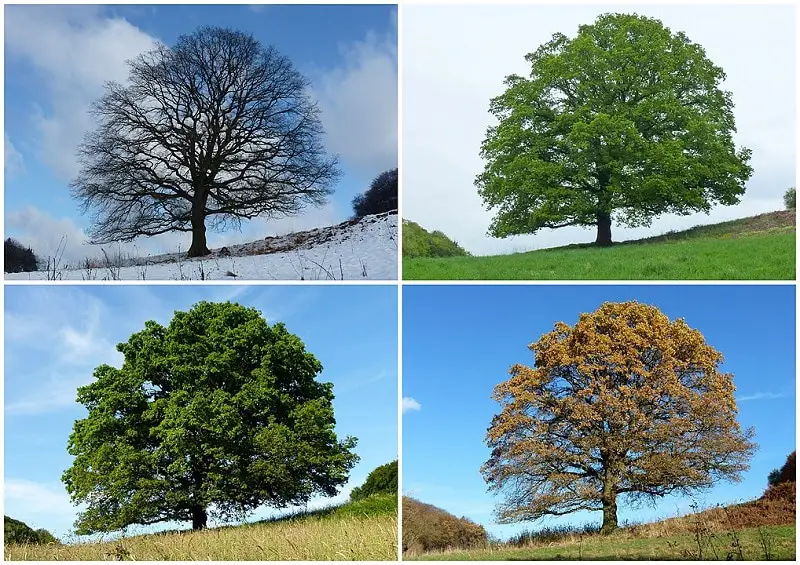There are generally four seasons that occur on earth due to the occurrence of equinoxes and solstices. On the other hand, the equinox and solstice occur due to the ever-changing position of the earth with respect to the sun.
In other words, the four seasons of the earth take place because of the earth’s changing position with respect to the sun. Spring and autumn occur due to equinoxes. Similarly, the summer and winter occur due to the solstices.
Equinox is a day when daylight and night-time become equal in both hemispheres. Solstice is a day either the longest or the shortest day of the year.
Difference Between Equinox and Solstice
| Equinox | Solstice | |
| 1. | An Equinox is a day when daylight and night-time become equal. | A Solstice is a day either having the longest or the shortest day of the year. |
| 2. | There are two types of equinoxes i.e spring and autumn equinoxes. | There are two types of solstice i.e summer and winter solstice. |
| 3. | Spring and Autumn (Fall) equinox mark the arrival of the first day of spring and autumn. | Summer and winter solstice marks the arrival of the first day of summer and winter. |
| 4. | On the eve of the equinox, the sun crosses over the celestial equatorial line of the earth. | On the eve of the solstice, one of the poles is at the maximum tilt away from or towards the sun. |
| 5. | An equinox occurs once in March and once in September. | A solstice occurs once in June and once in December. |
| 6. | Just because of the earth’s tilt, in the month of March, when there is a spring equinox in the northern hemisphere. At the same time, there is an autumn or fall equinox in the southern hemisphere. | Just because of the earth’s tilt, in the month of June, when there is summer solstice in the northern hemisphere. At the same time, there is winter solstice in the southern hemisphere. |
| 7. | Just because of the earth’s tilt, in the month of September, when there is an autumn equinox in the northern hemisphere. At the same time, there is a spring equinox in the southern hemisphere. | Just because of the earth’s tilt, in the month of December, when there is winter solstice in the northern hemisphere. At the same time, there is summer solstice in the southern hemisphere. |
Thanx to Earth’s Tilt, We See Equinoxes and Solstices
Yup, you heard me right! Thanx to the earth’s tilt we see Equinox and Solstice too. Just because the earth has an axial tilt of 23.4 degrees, there is a seasonal difference between the northern and the southern hemisphere.
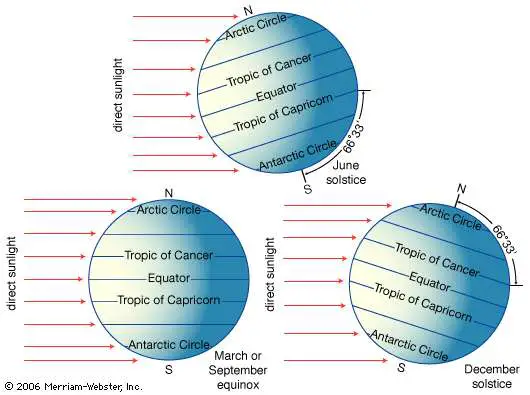
Suppose if the axis of the earth was not tilted like it is currently, there would be no seasons on the earth. In other words, in a given location, there would always be the presence of direct sunlight. On the other hand, at some other location, there would always be the presence of darkness throughout the years.
Not to mention, Kepler’s laws of planetary motion also play an important role in the occurrence of different seasons. But the role played by the earth’s tilt is unmatchable. To summarize, I would say that without the earth’s tilt, there would be no occurrence of Equinoxes as well as solstices too.
Editor’s Choice: Seasons in Southern Hemisphere & its Bizarre Consequences
What is an Equinox?
According to the astronomical definition of an equinox, this is a natural event during which the center of the sun crosses over the celestial equatorial line of the earth. In layman, one can say that an equinox occurs when the sun switches sides from one hemisphere of the earth to the other.
What does equinox mean?
The word “Equinox” is derived from the Latin word “Aequinoctium”. Confused?? Okay. Let me simplify it for you. The word “Aequinoctium” is made by combining two words i.e “Aequus” and “Nox”.
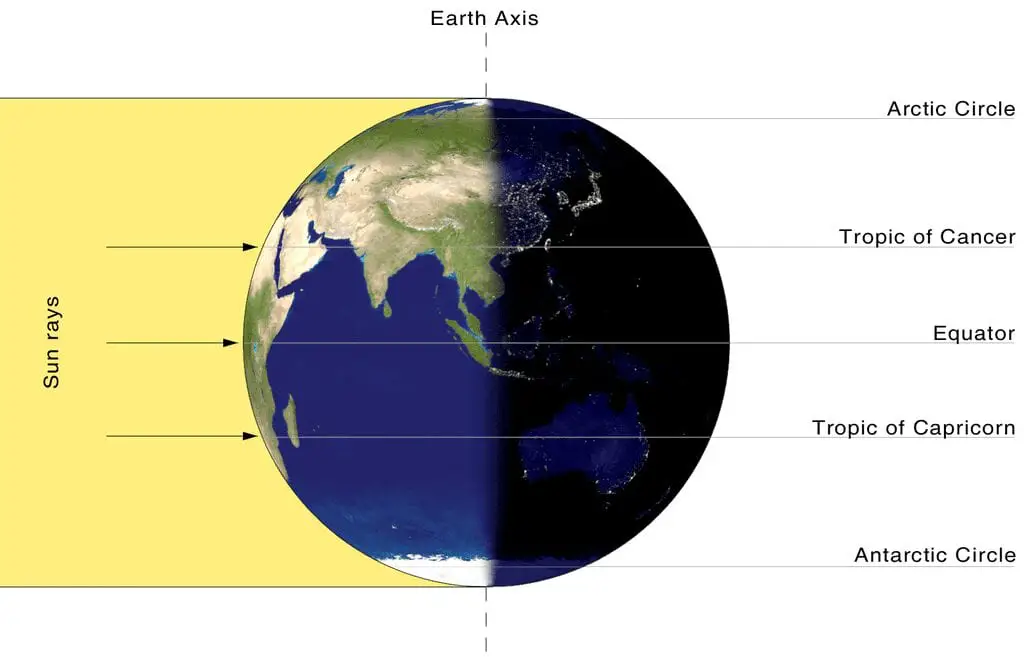
“Aequus” means “Equal” and “Nox” means “Night”. Therefore, “Aequinoctium” simply means “Equal Night”. That’s why Equinox is also referred to as a day when daylight and night-time become equal.
Highly Recommended: Full Moon Calendar 2021 (Dates & Names – Southern Hemisphere)
Types of Equinox
There are two types of equinoxes. These are spring and fall equinoxes. In reality, these are astronomical types of equinoxes. I mean these names are given according to the astronomical definition of seasons that occurs during the time of equinoxes in one of the hemispheres.
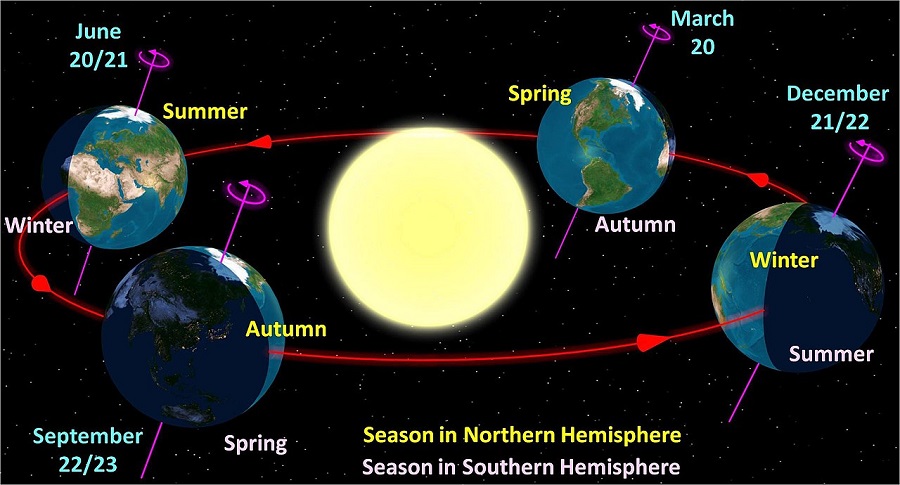
However, the official names of Equinoxes are somehow different from the above-mentioned ones. Confused? Okay. Let me sort it out for you. According to the definition of an equinox, the two types of equinoxes are March and September Equinox.
March Equinox aka Northward Equinox
On the eve of the March Equinox, the sun crosses over the imaginary celestial line from the south to the north direction. Therefore, as a result, marking the end of winter and the arrival of spring in the northern hemisphere.
That’s why March equinox is officially known as Spring or simply Vernal Equinox in the northern hemisphere. Not to mention, just because the sun crosses over the imaginary celestial line from the south to the north direction, March Equinox is also known as the Northward Equinox.
Moving ahead, as the sun switches sides from south to north, March Equinox marks the end of summers and the arrival of fall in the southern hemisphere. Hence, known as the fall or autumn equinox.
September Equinox aka Southward Equinox
On the eve of September Equinox, the sun crosses over the imaginary celestial line from the north to the south direction. Therefore, as a result, marking the end of summers and the arrival of fall in the northern hemisphere.
That’s why September Equinox is officially known as the Fall or simply Autumn Equinox in the northern hemisphere. Not to mention, just because the sun crosses over the imaginary celestial line from the north to south direction, September Equinox is also known as the Southward Equinox.
Moving ahead, as the sun switches sides from the north to the south, September Equinox marks the end of winters and the arrival of spring in the southern hemisphere. Hence, known as the spring or Vernal Equinox in the southern hemisphere.
Highly Recommended: Full Moon Calendar 2021 (Dates & Names – Northern Hemisphere)
When is the first day of spring?
As you already know that just because of the earth’s tilt, when there is a spring equinox in the northern hemisphere, there is a fall equinox in the southern hemisphere. Therefore, I am not going to explain it again.

Moving ahead, as of today, in the northern hemisphere, the first day of spring will occur on Monday, March 20, 2023, at sharp 21:25 Universal Coordinated Time (UTC).
On the other hand, the first day of spring in southern hemisphere will occur on Saturday, September 23, 2023, at sharp 16:50 Australian Eastern Standard Time (AEST).
When is the first day of fall?

As of today, in the northern hemisphere, the first day of fall will occur on Saturday, September 23, 2023, at 06:50 Universal Coordinated time (UTC).
On the other hand, the first day of fall in southern hemisphere will occur on Tuesday, March 21, at sharp 08:25 Australian Eastern Daylight Time (AEDT).
What is a Solstice?
According to the astronomical definition of solstices, this is a natural event during which one of the hemispheres is at the maximum tilt away from or towards the sun.
And, when this happens, the sun appears to stand still and reverses its direction. In other words, Solstice is a day that occurs due to the sun’s changing path.
What does solstice mean?
The word “Solstice” is derived from the Latin word “Solsistere”. Confused?? Okay. Let me simplify it for you. The word “Solsistere” is made by combining two words i.e “Sol” and “Sistere”.
“Sol” means “Sun” and “Sistere” means “to standstill”. Therefore, “Solsistere” simply means “a day when the sun stands still”.
Types of Solstices
There are two types of solstices. These are summer and winter solstices. In reality, these are astronomical types of solstices. I mean these names are given according to the astronomical definition of the seasons that occurs during the time of solstices in one of the hemispheres.
However, the official names of Solstices are somehow different from the above-mentioned ones. Confused? Okay. Let me sort it out for you. According to the definition of Solstice, the two types of solstices are June and December Solstice.
June Solstice
On the eve of June Solstice, the north pole of the earth is at its maximum tilt towards the sun. Therefore, as a result, marking the end of spring and the arrival of summer in the northern hemisphere.
That’s why June Solstice is officially known as Summer or simply Estival Solstice in the northern hemisphere. Not to mention, not only the Sun’s orbital path across the sky will be as high as it can be in the earth’s northern areas. The sun will also enter the tropic of Cancer on the eve of June Soltice.
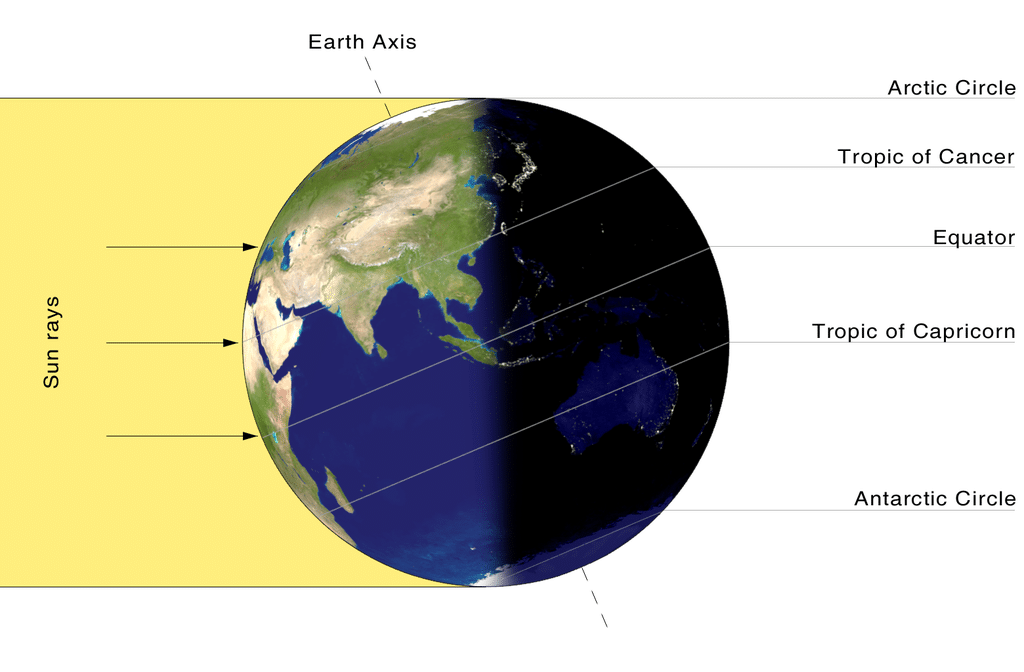
Moving ahead, as the Earth’s north pole is tilted closest to the Sun, June Solstice marks the end of autumn and the arrival of winters in the southern hemisphere. Hence, known as the winter or hibernal solstice in the southern hemisphere.
Additionally, the day of June solstice will be the brightest as well as the longest day of the year in the northern hemisphere. On the contrary, it will also be the darkest as well as the shortest day of the year in the southern hemisphere.
December Solstice
On the eve of December Solstice, the south pole of the earth is at its maximum tilt towards the sun. Therefore, as a result, marking the end of spring and the arrival of summer in the southern hemisphere.
That’s why December Solstice is officially known as Summer or Estival Solstice in the southern hemisphere. Not to mention, not only the sun’s orbital path across the sky will be as high as it can be in the earth’s southern areas. The sun will also enter the tropic of Capricorn on the eve of December Solstice.
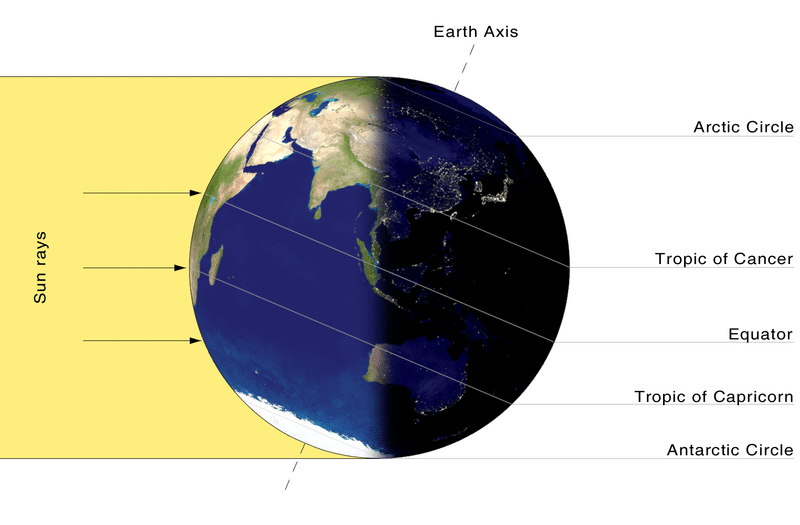
Moving ahead, as the earth’s south pole is tilted closest to the Sun, the December solstice marks the end of autumn and the arrival of winters in the northern hemisphere. Hence, known as the winter or hibernal solstice in the northern hemisphere.
Additionally, the day of December solstice will be the brightest as well as the longest day of the year in the southern hemisphere. On the contrary, it will also be the darkest as well as the shortest day of the year in the northern hemisphere.
Editor’s Choice: Seasons in Northern Hemisphere & its Bizarre Consequences
When is the first day of summer?
Again, you already know that because of the earth’s axial tilt, when there is the summer solstice in the northern hemisphere, there is the winter solstice in the southern hemisphere.

Therefore, moving ahead, as of today, in the northern hemisphere, the first day of summer will occur on Wednesday, June 21, 2023, at 14:58 Universal Coordinated time (UTC).
On the other hand, the first day of summer in the southern hemisphere will occur on Friday, December 22, 2023, at a sharp 14:28 Australian Eastern Daylight Time (AEDT).
When is the first day of winter?

As of today, the first day of winter in the northern hemisphere will occur on Friday, December 22, 2023, at sharp 03:28 Universal Coordinated time (UTC).
On the other hand, the first day of winter in the southern hemisphere will occur on Thursday, June 22, 2023, at sharp 00:58 Australian Eastern Standard Time (AEST).
Why do the dates of the solstices and equinoxes vary?
Yes, its date does vary. Well, it’s not rocket science to understand, just some basic physics. See, after every four years, there is a leap year. Therefore, in order to adjust the Gregorian Calendar with the eve of the winter solstice, the December solstice date varies.
For example, in 2019, the December solstice occurred on the 22nd of the month. But next year i.e 2023, it occurred on the 21st of the month. Such is the case with all the types of Equinox and Solstice.
Not to mention, there are some other factors too, that contribute to the variation in the equinox and solstice dates. But, just to make things simple, I am just neglecting them.
That’s it for this post. If you like this article, share it if you like, like it if you share it. You can also find us on Mix, Twitter, Pinterest, and Facebook. Hey man, If you have come this far, do give us feedback in the comment section. It would make my day. You can also make a donation. Your donations will help us to run our website and serve you BETTER. Cheers!!!
